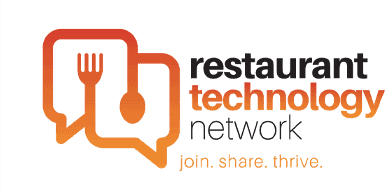When COVID-19 struck in February and March of this year, restaurant dining rooms around the world were plunged into darkness (along with the economic outlook for their owners and staff).
The focus of restaurants immediately turned to finding the best and safest ways to keep their doors open and to continue serving a hungry clientele without endangering themselves or the general public. Delivery and takeout became the overnight norm, and a variety of novel strategies were quickly formulated by innovative owners in order to rise to the challenge of such unexpected circumstances.
With time, these circumstances have evolved, and government-imposed social distancing and shelter at home guidelines have stemmed the tide of infections in some places while other hot spots continue to flare up in their place.
On top of the devastating death toll, the economy has suffered greatly in the face of these massive business closings in all industries. Government stimulus bills continue to be proposed to help both businesses and the public survive, but some governors, along with vocal groups of constituents, are beginning to lose patience. It’s time, they say, to open the economy.
Whether you’re in a state that’s beginning to reopen or in one where restrictions remain in place for the time being, the time for reopening your restaurant will come.
And when it does, there are guidelines you’ll need to know and measures you’ll need to take to convince a nervous public that it’s safe for them to walk back through your doors. Specific guidelines will no doubt vary depending on your location, but the National Restaurant Association has released a detailed report offering guidance for restaurants as they work toward getting back to business.
Below are some highlights of what the Association recommends for post-COVID restaurant openings. They encourage combining these guidelines with existing corporate policies, the FDA Food Code, ServSafe training, and recommendations from local health officials.
Food safety
When it comes to food safety, all the old rules and precautions of the FDA’s “food code” still apply. The new guidelines reiterate things like discarding out-of-date food items, the implementation of sneeze guards, etc. Procedures emphasized by the new guidelines in response to COVID include:
- Prohibiting sick employees in the workplace
- Strict handwashing practices that include how and when to wash hands
- Strong procedures and practices to clean and sanitize surfaces
- Ensuring the person in charge of a foodservice facility is a certified food safety manager
- Ensuring the person in charge is on site at all times during operating hours
- If providing “grab-and-go” service, stock coolers to no more than minimum levels
Facility cleaning and sanitizing
In regards to the cleaning and sanitation of the facility in general, the guidelines make a variety of specific recommendations, including:
- Focus on high-contact areas touched by both employees and guests.
- Do not overlook seldom-touched surfaces.
- Follow sanitizing material guidance to ensure it is at effective sanitizing strength, and to protect surfaces.
- Between seatings, clean and sanitize table condiments, digital-ordering devices, check presenters, self-service areas, tabletops, and common-touch areas.
- Avoid all food contact surfaces when using disinfectants.
- Discard all single-use items. Consider using rolled silverware and eliminating table presets.
- Remove lemons and unwrapped straws from self-service drink stations.
- Clean and sanitize reusable menus. If you use paper menus, discard them after each customer use.
- Implement procedures to increase how often you clean and sanitize surfaces in the back-of-house.
- Avoid all food contact surfaces when using disinfectants.
- Check restrooms regularly, and clean and sanitize them based on frequency of use.
- Make hand sanitizer readily available to guests. Consider touchless hand sanitizing solutions.
Employee health and hygiene
Of course one of the most important ways to prevent spread of the virus to staff and customers is to eliminate interaction between those who are (or may be) infected from those who aren’t. The guidelines mandate pre-work screening for all employees. Employees who become ill or present signs of illness should be immediately sent home.
Follow CDC guidelines as to when ill employees may return to work. At a minimum, the employee should self-isolate for seven days from the onset of symptoms, and be symptom-free for three days without medication. The CDC has not mandated taking an employee’s temperature. Any operator who chooses to do so should engage health officials first and adopt policies aligned with proper procedures.
Social distancing
In addition to all of the above, customers and staff should continue to observe the social distancing principles that we’ve all become familiar with since the onset of the virus. Some specific guidelines and suggestions in the Association’s report include:
- Post signage at the entrance stating no one with a fever or symptoms of COVID-19 can enter the restaurant.
- Update floor plans for common dining areas, redesigning seating arrangements to ensure at least six feet of separation between table setups.
- Design a process so guests stay separated while waiting for seating. Don’t allow them to congregate in waiting or bar areas. This process can include floor markings, outdoor distancing, waiting in cars, etc.
- Limit party size at tables to no more than the established “maximums approved” as recommended by CDC or approved by local and state government.
- Physical barriers are acceptable where practical, especially in booth seating.
- Consider a reservations-only or call-ahead-seating business model to better space diners.
- Social distancing measures based on square footage should take into account service and guest areas.
- Remind third-party delivery drivers and any suppliers that you have internal distancing requirements.
- Limit contact between wait staff and guests.
- If practical, physical barriers such as partitions or Plexiglas at registers are acceptable.
- Use technology where possible to reduce person-to-person interaction, including mobile ordering, menu tablets, texts on arrival for seating, and contactless payment.
- Determine ingress/egress to and from restrooms to establish paths that mitigate proximity for guests and staff.
- Consider an exit from the facility separate from the entrance.
Reopening your restaurant involves plenty of considerations, and it won’t be a one-and-done deal. But by preparing in advance, taking the time to understand what needs to be done, and engaging your staff to help you do it, you’ll be able to gradually get back to business—almost—as usual.





